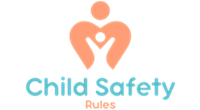Teaching children about stranger danger is a crucial step in keeping them safe in today’s world. With the increasing threats of child abduction, abuse, and exploitation, it is essential for parents and caregivers to educate kids on how to identify and handle potentially dangerous situations involving strangers. By teaching kids about stranger danger, we can empower them with the skills to protect themselves and make smart decisions when faced with unfamiliar individuals.
One of the first things to teach children about stranger danger is defining who a stranger is. Explain to them that a stranger is anyone they do not know or recognize, regardless of how friendly or kind they may seem. Emphasize that it is okay to talk to strangers in certain situations, such as asking for directions or assistance from a store employee, but they should never go anywhere with a stranger or accept gifts or treats from them without a parent’s permission.
It is crucial to teach kids to trust their instincts and listen to their gut feelings when it comes to dealing with strangers. Encourage them to pay attention to how they feel in certain situations – if something doesn’t feel right or if they feel uncomfortable, it’s important to communicate with a trusted adult. Teach kids to be assertive and confident in saying “no” to strangers if they feel unsafe or pressured to do something they are not comfortable with.
Role-playing scenarios with children is a great way to help them practice how to react in potentially dangerous situations involving strangers. Teach them how to say “no” loudly and confidently, how to run away and find a safe place, and how to seek help from a trusted adult or authority figure if needed. By going over these scenarios with children, it can help them feel more prepared and empowered to handle unexpected encounters with strangers.
In addition to teaching kids about stranger danger, it is important for parents and caregivers to set clear boundaries and guidelines for their children on when and where they can go alone. Always know where your child is and who they are with, even if they are just going to the park or a friend’s house. Establish a safety plan with your child, such as having a designated safe word or a trusted family member or neighbor they can go to for help in case of an emergency.
Overall, teaching kids about stranger danger is not about scaring them, but rather empowering them with the knowledge and skills to keep themselves safe in potentially dangerous situations. By having open and honest conversations with children about stranger danger and practicing safety strategies, we can help them navigate the world with confidence and awareness. Remember, the goal is not to instill fear, but rather equip children with the tools to make smart choices and stay safe when faced with the unexpected.










